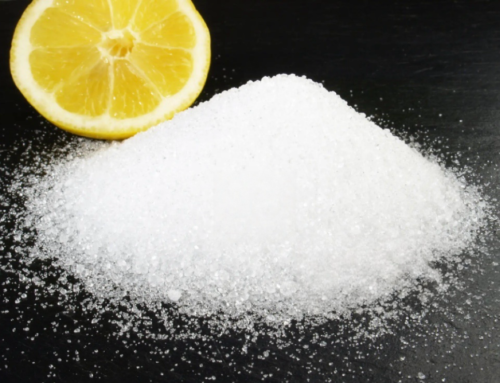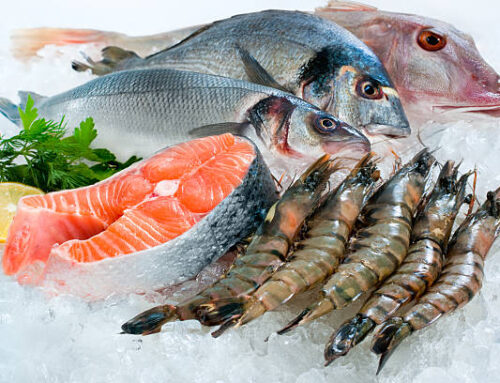Have you ever wondered why some cuts of meat are incredibly tender and juicy while others seem tough and chewy? The answer lies in the art of meat processing and the use of specific additives. One such ingredient that has been revolutionizing the meat industry for decades is Sodium Tripolyphosphate (STPP). In this blog post, we will explore the uses of Sodium Tripolyphosphate and how it plays a pivotal role in keeping meat tender and succulent.
What is Sodium Tripolyphosphate (STPP)?
Sodium Tripolyphosphate, commonly known as STPP, is an inorganic compound with the chemical formula Na5P3O10. It is a white, crystalline powder that is highly soluble in water. Due to its exceptional water-binding capabilities, STPP finds widespread use in various industries, including food processing.
For more details on specifications for sodium tripolyphosphate, please check our product page: Sodium Tripolyphosphate Food Additive STPP
What are the benefits of sodium tripolyphosphate used in meat?
 Sodium Tripolyphosphate (STPP) offers several benefits in meat processing, each contributing to the overall quality and palatability of the final product.
Sodium Tripolyphosphate (STPP) offers several benefits in meat processing, each contributing to the overall quality and palatability of the final product.
Improved Moisture Retention
One of the primary advantages of STPP in meat processing is its ability to enhance moisture retention. By interacting with proteins and mineral ions in the meat, STPP increases the water-holding capacity of muscle cells. This results in meat that remains juicier and more succulent during cooking, reducing the risk of dryness and ensuring a more enjoyable eating experience.
Enhanced Tenderness
STPP plays a crucial role in tenderizing meat. Through protein denaturation, the compound alters the structure of muscle fibers, breaking down tough collagen and connective tissues. As a result, even the toughest cuts of meat become noticeably more tender and easier to chew, appealing to a broader range of consumers.
Improved Texture
In addition to increasing tenderness, STPP also contributes to an improved texture in the meat. The breakdown of collagen and connective tissues results in a smoother and more pleasant mouthfeel. The softness of the meat allows it to be easily cut and chewed, further adding to the overall eating experience.
Retention of Natural Flavors
The ability of STPP to retain moisture has another significant advantage – it helps preserve the natural flavors of the meat. As the meat retains more water during cooking, it also holds onto its inherent flavors. This leads to more flavorful and enjoyable meat dishes without the need for excessive seasoning or artificial additives.
Extended Shelf Life
The increased water-holding capacity achieved through STPP treatment extends the shelf life of meat products. By slowing down the dehydration process, the meat remains fresher for a more extended period. This benefit is especially valuable for the meat industry, where maintaining product quality and reducing waste are paramount concerns.
Cost-Effectiveness
Using STPP in meat processing can be cost-effective for manufacturers and butchers. Due to its water-binding properties, less water loss occurs during cooking, meaning the weight of the meat is better preserved. This can result in better yields and reduced costs for both producers and consumers.
Uniformity in Cooking
STPP-treated meat exhibits greater uniformity in cooking. The increased moisture retention ensures that the meat cooks more evenly, preventing overcooking or undercooking in different areas of the cut. This consistency leads to better culinary results and customer satisfaction.
The science behind it
The scientific basis for why sodium tripolyphosphate (STPP) can moisturize meat lies in its ability to bind and sequester water molecules through a process known as water hydration or hydration reactions.
The chemical formula for the relevant reaction can be represented as follows:
Na5P3O10 + nH2O → (Na5P3O10 • nH2O)
In this equation:
Na5P3O10 represents sodium tripolyphosphate.
nH2O represents water molecules.
The reaction shows that when sodium tripolyphosphate comes into contact with water, it forms a hydrated complex denoted by (Na5P3O10 • nH2O), where n represents the number of water molecules associated with each sodium tripolyphosphate molecule.
In meat processing, the presence of water allows STPP to readily interact with the water molecules present in the meat. The polar phosphate groups in STPP have an affinity for water molecules due to their partial positive and negative charges, creating hydrogen bonding interactions. As a result, the sodium tripolyphosphate molecules attract and trap water molecules within their structure, leading to the formation of a hydrated complex.
This hydration of STPP effectively enhances the meat’s water-holding capacity. When meat is treated with STPP, the hydrated STPP molecules become dispersed throughout the muscle fibers, where they bind to water molecules and prevent them from being easily lost during cooking. This results in meat that retains more moisture, remaining juicier and tenderer during the cooking process.
How do you use STPP in food?
Using sodium tripolyphosphate (STPP) in meat products requires careful consideration and adherence to proper guidelines to ensure food safety and desired outcomes. Here is a general guide on how to use STPP in meat products:
Choose the Right STPP
Ensure that you use food-grade STPP, specifically designed for culinary purposes. Select a reputable supplier to guarantee the quality and purity of the product.
Determine the Appropriate Amount
The recommended usage levels of STPP may vary depending on the type of meat and the desired outcome. Consult with food scientists, meat technologists, or industry experts to determine the appropriate amount of STPP to be used per kilogram or pound of meat.
Prepare the STPP Solution
Dissolve the required amount of STPP in cold water to create a solution. Cold water is preferred, as it aids in the dissolution of STPP and reduces the risk of denaturing proteins prematurely.
Ensure Proper Mixing
Thoroughly mix the STPP solution with the meat to ensure even distribution. For large quantities, consider using mechanical mixers or vacuum tumblers for a more uniform application
Allow Sufficient Soaking Time
Depending on the meat type and cut, the soaking time can vary. Generally, meat should be allowed to soak in the STPP solution for about 30 minutes to an hour. Avoid excessive soaking times, as prolonged exposure to STPP may result in undesirable textures.
Observe Safety Guidelines
Always follow food safety guidelines and adhere to approved usage levels to prevent the overuse of STPP, which can negatively impact the texture and flavor of the meat.
Rinse if Necessary
In some cases, rinsing the meat after the STPP treatment might be recommended to remove any excess STPP on the surface. This step is particularly important if the meat is intended for further processing or marination.
Control pH Levels
Be cautious about the pH level of the STPP solution. A low pH can lead to premature protein denaturation, affecting the desired tenderization process. Maintain the pH within a suitable range to avoid any adverse effects.
Consider the Meat Type
Different meats may respond differently to STPP treatment. While STPP is commonly used in poultry and certain red meats, it might not be suitable for certain delicate fish or seafood varieties.
Monitor Product Quality
Regularly assess the quality and consumer acceptability of the STPP-treated meat products. Adjust the STPP usage as needed to achieve the desired results.
It’s crucial to mention that while STPP can offer significant benefits in meat processing, it should be used responsibly and within regulatory guidelines to ensure food safety and consumer satisfaction.
Is sodium tripolyphosphate safe to eat?
Yes, sodium tripolyphosphate (STPP) is generally recognized as safe (GRAS) for use in food by regulatory agencies such as the U.S. Food and Drug Administration (FDA) and the European Food Safety Agency (EFSA). STPP is considered safe for consumption when used within approved limits and in accordance with good manufacturing practices.
Conclusion
Sodium Tripolyphosphate is undeniably a game-changer in the meat processing industry. Its ability to enhance meat texture, retain moisture, and improve flavor makes it a valuable tool for butchers and food manufacturers alike. When used responsibly and in compliance with safety regulations, STPP can significantly elevate the quality of meat products, delighting consumers with tender and succulent offerings.
For inquiries and orders, please feel free to contact us at [email protected] or via WhatsApp.




